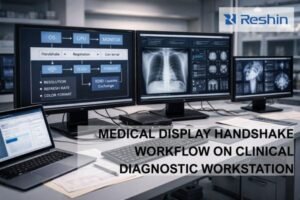Ever wondered how doctors see inside your body without making a single cut? That’s the magic of medical imaging. It’s like having a set of high-tech eyes.
Medical imaging encompasses a range of non-invasive techniques used to visualize the internal structures and functions of the human body. It helps doctors diagnose and monitor a wide variety of medical conditions, from broken bones to tumors, without the need for surgery.

What Do You Mean by Medical Imaging? A Doctor’s "Inner Eye"
To me, medical imaging is like a doctor’s superpower. It lets them see what’s going on inside us without having to guess.
Medical imaging is a set of technologies that create visual representations of the body’s internal structures. It translates data from X-rays, sound waves, or magnetic fields into images that doctors can analyze to diagnose and treat diseases.

Here’s how I see it:
-
A Tool for Doctors: It’s a way for doctors to "see" inside the body without surgery, helping them find illnesses or injuries.
-
High-Tech Vision: It’s like a high-tech "X-ray vision" that creates images of bones and organs to aid in diagnosis.
-
Visualizing Structures: Medical imaging transforms the body’s structure into visible images, like X-rays or scans, to reveal hidden problems.
-
A Translator: It’s like a translator that converts internal signals (like X-rays or sound waves) into images that doctors can understand.
-
Aids in Diagnosis: The main goal is to help doctors make accurate diagnoses, reduce errors, and provide targeted treatments.
What Are the Four Types of Medical Imaging? Different Tools for Different Jobs
I’m always amazed by the variety of medical imaging techniques. Each one has its own strengths and weaknesses, like different filters on a camera.
The four main types of medical imaging are X-ray, ultrasound, computed tomography (CT), and magnetic resonance imaging (MRI). Each technique uses different principles to create images of the body’s internal structures.

Here’s my take on each type:
-
X-ray: I’ve had X-rays for broken bones. It’s quick and uses low radiation, so it’s a common choice.
-
Ultrasound: I see ultrasound as the safest option, especially during pregnancy. It uses sound waves to create images, with no radiation.
-
CT Scan: A CT scan feels like going into a "big ring." It’s more detailed than an X-ray and can show layers of the body.
-
MRI: MRI is the most mysterious to me. It’s noisy but has no radiation, great for checking soft tissues like the brain or ligaments.
-
Nuclear Medicine (PET): I’ve heard of nuclear medicine scans like PET, which involve injecting drugs to show body activity, but I haven’t had one myself.
Is Medical Imaging the Same as MRI? No, MRI is Just One Piece of the Puzzle
It’s easy to assume that medical imaging and MRI are the same thing. But MRI is just one of several different ways to look inside the body.
Medical imaging is a broad term that encompasses all techniques used to visualize the inside of the body. MRI is a specific type of medical imaging that uses magnetic fields and radio waves to create detailed images of soft tissues.

Medical imaging includes X-rays, CT scans, ultrasounds, and MRI, among other technologies. MRI stands for Magnetic Resonance Imaging, which uses strong magnetic fields and radio waves to generate detailed images of the organs and tissues in your body.
MRI is a non-invasive way for your doctor to examine your organs, tissues and skeletal system. MRI scans create images of the human body using a strong magnetic field and radio waves. MRI is often used for soft tissues of the body, such as the brain, spinal cord, nerves, muscles, ligaments, and tendons.
What is the Most Common Form of Medical Imaging? The Workhorse of Diagnostics
If I had to guess, I’d say the most common type of medical imaging is X-ray. It’s the one I see most often in hospitals and clinics.
The most common form of medical imaging is X-ray. It is widely used for detecting bone fractures, pneumonia, and other conditions due to its speed, low cost, and availability.

- Wide Use: X-rays are used for bone fractures and pneumonia, quick and cheap.
- Common Machine: X-ray machines are the most common in hospitals.
- Primary Tool: X-rays are doctors’ first choice for check-ups.
- Everyday Use: X-rays are used often in clinics and emergency rooms for bone and chest problems.
- My Experience: Most people I know have had X-rays, mostly for bone and chest issues.
Conclusion
Medical imaging provides critical tools for doctors to diagnose and treat illnesses non-invasively. Understanding the different types of medical imaging techniques and their applications can help us appreciate the power of these technologies in modern medicine.


